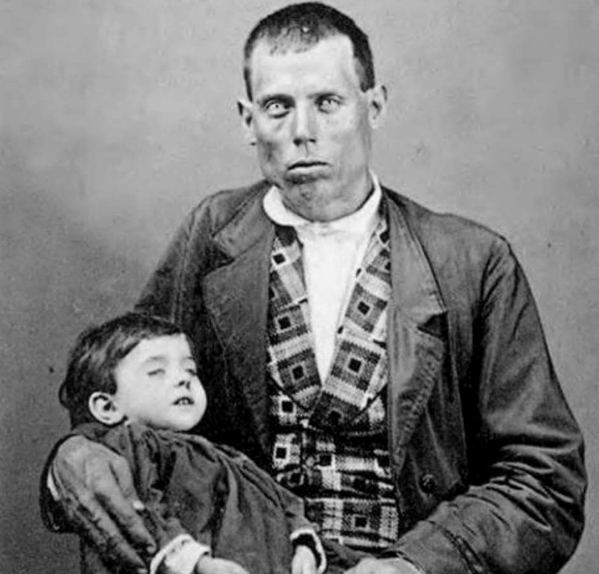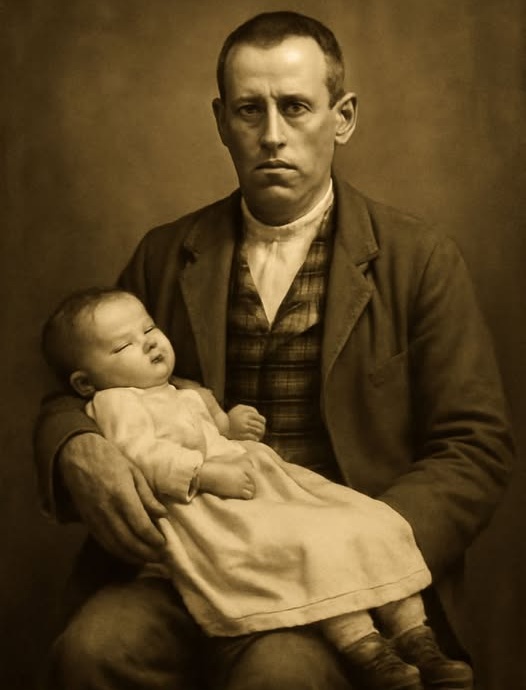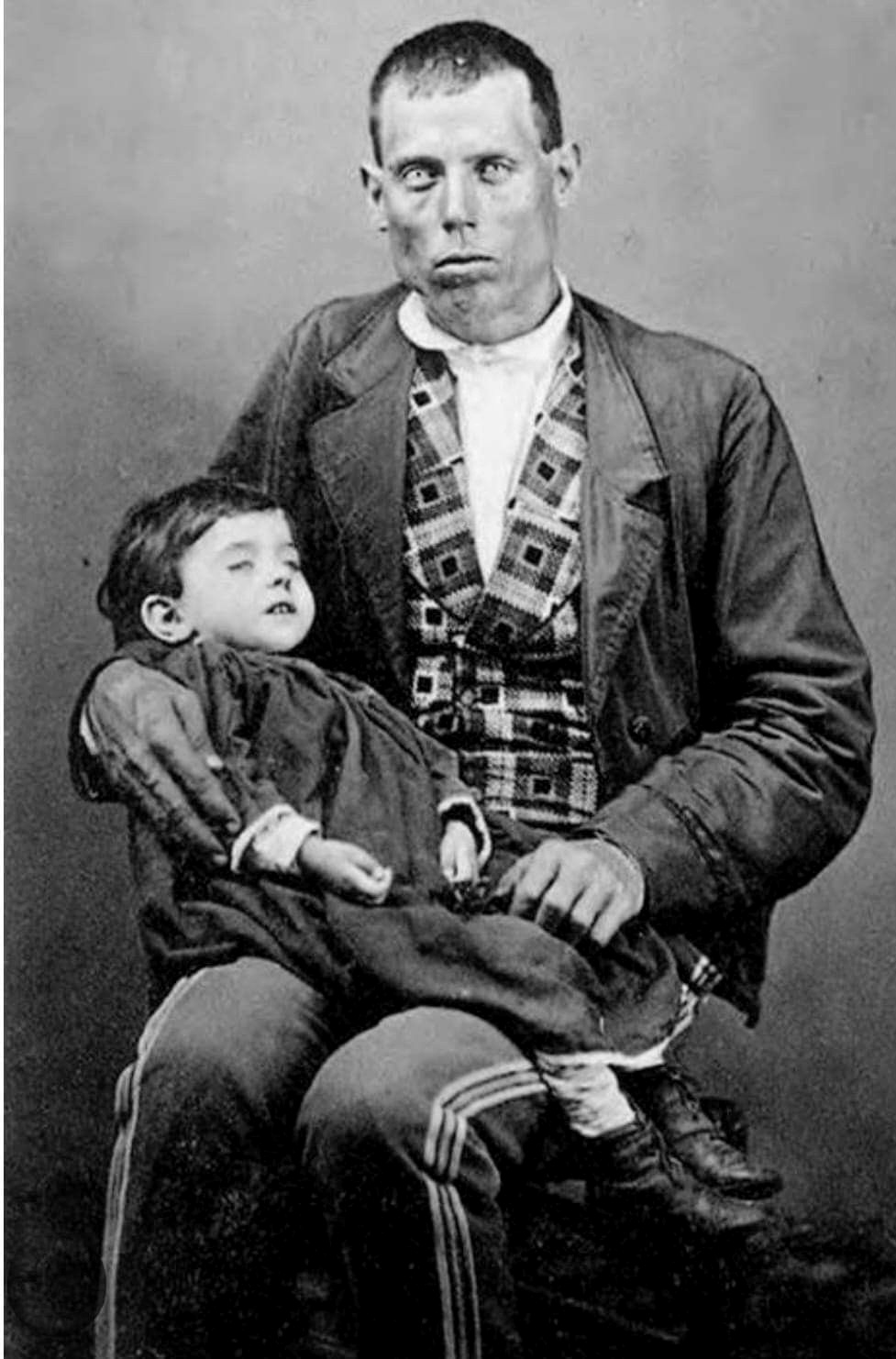A Father’s Eternal Goodbye A Heartbreaking 1891 Portrait That Captured Love Beyond Loss

In the winter of 1891, inside a quiet studio in London, a grieving father named Edward Harrow took part in one of the most poignant moments of his life. Standing before a camera’s lens, he held the small, still form of his infant daughter, Clara — a child whose brief time on earth had already passed. The photograph that followed would become more than a portrait; it would stand as a lasting expression of love, loss, and remembrance.
The studio was dim and solemn, scented faintly with lavender. Pale winter light filtered through tall windows, casting soft shadows across the floor. Edward’s hands trembled as he cradled his daughter, her features calm and delicate, her tiny fingers resting gently in stillness. Outside, the bells of St. Martin’s rang through the cold air, their echoes marking a city that seemed to pause in quiet sympathy.

The photographer, known only by his initials, moved carefully, his voice low and respectful as he guided Edward through the process. “Hold still, sir,” he whispered, as the father leaned close and pressed his lips to Clara’s hair. In that moment, every detail — the scent of lilac, the hush of the room, the trembling of Edward’s breath — became part of something eternal.
When the camera shutter finally closed, it did more than record an image. It captured a connection between two worlds — the living and the gone — and preserved a father’s devotion on silvered glass. The photograph, later developed with painstaking care, showed Edward seated in his dark coat, his face pale with grief yet softened with tenderness as he held Clara in his arms.

As years passed, the image faded, its edges worn by time. Yet for Edward, it remained a sacred keepsake. Each morning, he would sit by the window where the light fell gently on the frame, tracing the outline of his daughter’s face as if touching memory itself. In those moments, he said he could almost feel her warmth again — not in body, but in the enduring bond that love had left behind.
Historians now recognize this portrait as part of a 19th-century tradition known as memorial photography, a practice through which families sought to preserve the memory of those they had loved and lost. But for Edward Harrow, it was far more personal — a father’s final act of devotion, frozen in time, where love refused to fade.











